
Trillium is a genus of about fifty flowering plant species in the family Melanthiaceae. Trillium species are native to temperate regions of North America and Asia, with the greatest diversity of species found in the southern Appalachian Mountains in the southeastern United States.

Catasetum, abbreviated as Ctsm. in horticultural trade, is a genus of showy epiphytic Orchids, family Orchidaceae, subfamily Epidendroideae, tribe Cymbidieae, subtribe Catasetinae, with 166 species, many of which are highly prized in horticulture.

Allium cernuum, known as nodding onion or lady's leek, is a perennial plant in the genus Allium. It grows in open areas in North America.

Trillium cernuum is a species of flowering plant in the bunchflower family Melanthiaceae. The specific epithet cernuum means "drooping, curving forwards, facing downwards", a distinctive habit of its flower. It is commonly called nodding trillium or nodding wakerobin since the flower is invariably found nodding beneath the leaves. It is sometimes referred to as the northern nodding trillium to distinguish from Trillium rugelii, a similar nodding species native to the southern Appalachian Mountains. It is also called the whip-poor-will flower since presumably its bloom coincides with the spring arrival of the migrating bird with the same name.
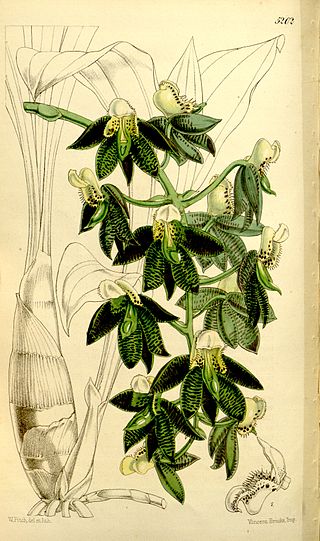
Catasetum atratum, the lustrous black catasetum, is a species of orchid found in Brazil.
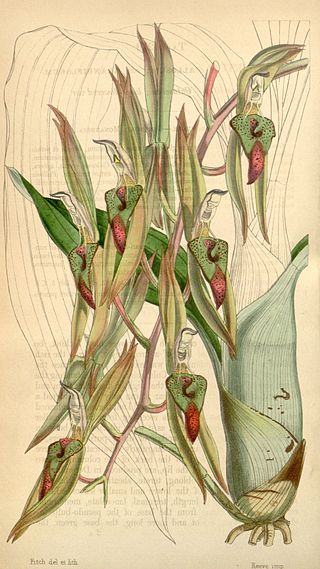
Catasetum callosum, the callused catasetum, is a species of orchid.

Catasetum cristatum, the comb-like catasetum, is a species of orchid found from North South America to North Brazil.
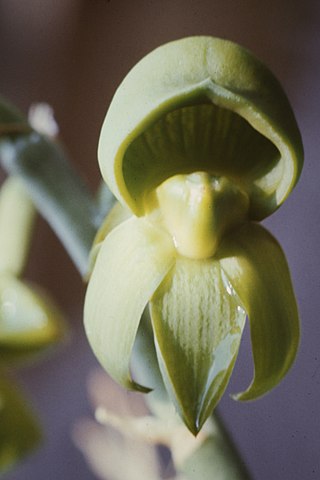
Catasetum discolor, the differently colored catasetum, is a species of orchid.

Catasetum expansum, the expansive catasetum, is a species of epiphytic orchid endemic to Ecuador.
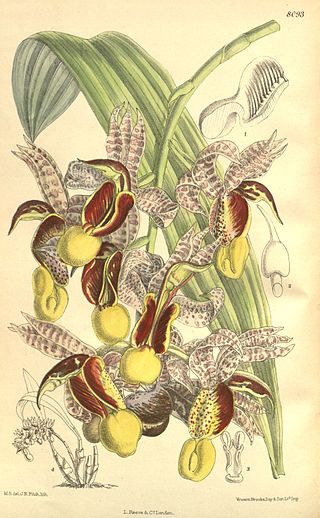
Catasetum galeritum is a species of orchid found in North Brazil.
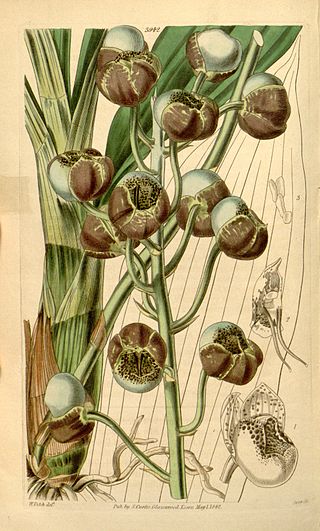
Catasetum globiflorum, the spheroid-flowered catasetum, is a species of orchid found in Brazil.
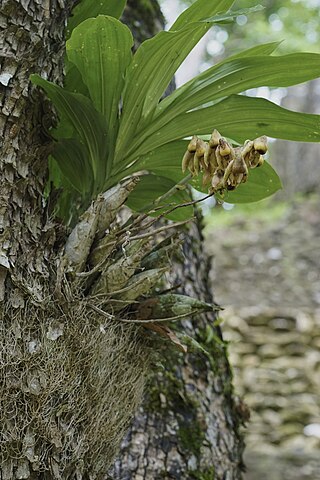
Catasetum integerrimum, the intact catasetum, is a species of orchid found from Mexico to Central America.

Catasetum lemosii is a species of orchid found in northern Brazil.

Catasetum longifolium is a species of orchid found from northern South America to northern Brazil.

Catasetum naso, the nose catasetum, is a species of orchid found from Colombia to Venezuela.
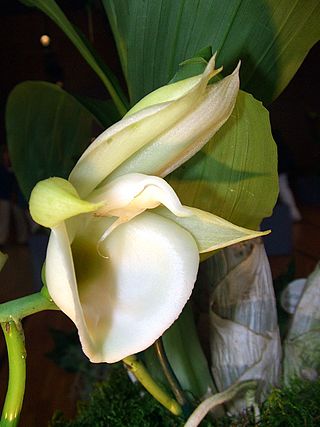
Catasetum pileatum, the felt-capped catasetum or mother of pearl flower, is a species of orchid found from Trinidad to Ecuador.

Catasetum planiceps is a species of orchid found from North South America to Brazil.

Catasetum saccatum, the sack-shaped catasetum, is a species of orchid.
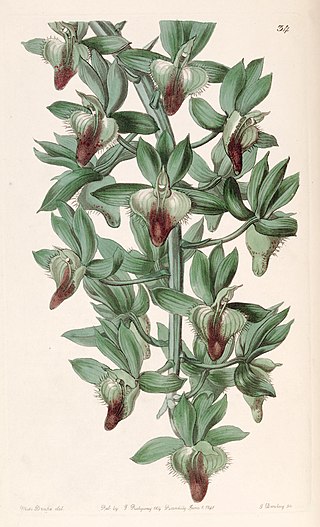
Catasetum socco is a species of orchid found in south-eastern Brazil.


















